
Are you planning a (day) hike and wondering what is essential to bring with you? Whether you’re a seasoned hiker or new to the activity, having the right gear is essential to a successful and safe hiking trip.
We have composed a list of gear and tools with the 10 essentials for day hiking, because packing the right gear can make all the difference. Some of these items you will hopefully never need to use but hey… better safe than sorry!
In this article, we’ll cover the day hike essential gear and things needed for hiking, so you can be prepared for any situation on the trail. So grab your backpack, lace up your boots, and let’s get started!
10 essentials for hiking
The 10 essentials for day hiking are a set of items that every hiker should have in their backpack, regardless of the length or difficulty of the trail.
Some of the items on the list are just to make your experience on the trails more comfortable.
Other items are packed in case of an emergency. These are the kind of tools you hope you will never have to use. Nevertheless, no matter how small or big the adventures is you are planning, it’s best to come prepared!
Although most of the items are relevant all year long, some like sun protection for instance will be mostly useful in warm climates or summer season. Even so, it’s not bad just having them in your hiking backpack.
Here is the short version you can use as a checklist before you go. Below we will discuss each essential for day hiking some more in depth.
Checklist:
- Navigation: A map and compass (and the knowledge to use them) can be lifesavers if you get lost on the trail.
- Local map
- Compass
- GPS device
- Sun protection: Sunscreen, sunglasses, and a hat are essential to protect your skin and eyes from the sun’s harmful rays.
- Sunglasses
- Hat or cap
- Sunscreen
- UV protective clothing
- Insulation & rain: Even on a warm day, temperatures can drop quickly in the mountains or in the evening. Pack a warm layer such as a fleece or puffy jacket. In addition, a shell jacket for when it’s raining to keep you dry.
- a warm mid layer (fleece of puffy jacket)
- a hard shell jacket or rain jacket
- Gloves (in cold temperatures)
- Beanie (in cold temperatures)
- Illumination: A flashlight or headlamp with extra batteries/powerbanks can help you navigate in the dark and signal for help if needed.
- A flashlight
- Headlamp
- Powerbank(s)
- First-aid supplies: A basic first-aid kit with items like bandages, gauze, and antiseptic can help you treat minor injuries on the trail.
- Outdoor first aid kit
- Rescue blanket
- Fire: Matches or a lighter in a waterproof container can help you start a fire for warmth or to signal for help.
- Matches or lighter
- Waterproof container
- Tindersticks
- Repair kit and tools: A multi-tool, duct tape, and a repair kit for your gear can help you fix unexpected issues on the trail.
- Leatherman, Gerber or Swiss knife
- Duct tape
- Paracord
- Nutrition: Bring enough food and snacks for the length of your hike, plus a little extra in case of emergency. High-energy snacks like trail mix and energy bars are a great option.
- Energy bars
- Energy gels
- Hydration: Bring enough water for the length of your hike, plus extra in case of emergency. A hydration bladder or water bottles can be used to carry water.
- Insulated drinking bottle
- Hydration reservoir
- Quick stow flask
- Emergency shelter: A lightweight emergency shelter like a space blanket can help protect you from the elements in case you get lost or injured on the trail.
- Emergency shelter, blanket and sleeping bag
1. Navigation
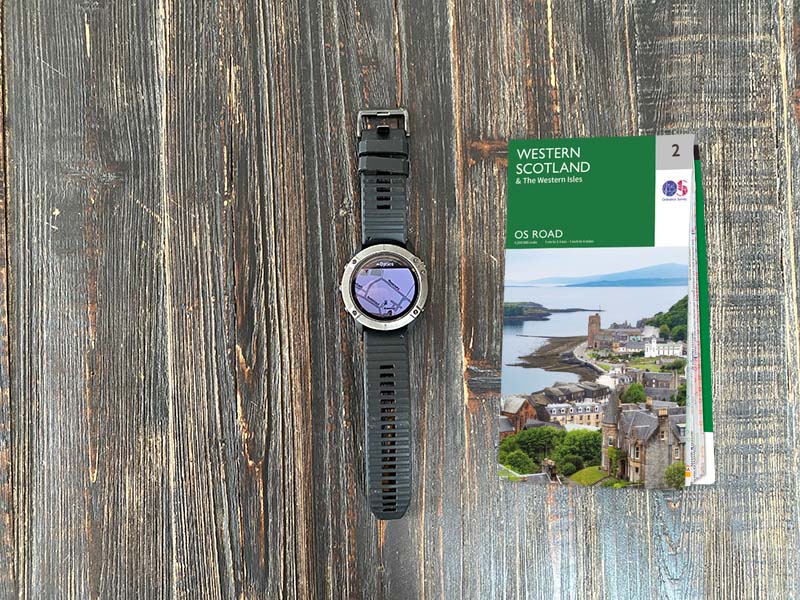
A map and compass are one of the 10 essentials for hiking, even if you’re following a well-marked trail. They can help you stay on course if you get lost or if the trail becomes obscured.
However, navigating with a map and compass can be challenging sometimes. It’s therefore advisable to practice this upfront and train the skills how to use these tools.
Make sure to keep your map and compass in a waterproof container to protect them from the elements.
GPS devices and smartphone apps can also be helpful, but they shouldn’t be relied on as your only navigation tools. Electronic devices can stop working due to empty batteries or other technical issues.
Therefore, analogue tools like a local hiking map and compass are a good backup. You can buy a map or download and print it yourself. You’ll find more info about printing a topo map for the US here: USGS For EU visit here.
Products we use and can recommend for hiking:
Garmin Fenix series for GPS navigation
2. Sun protection
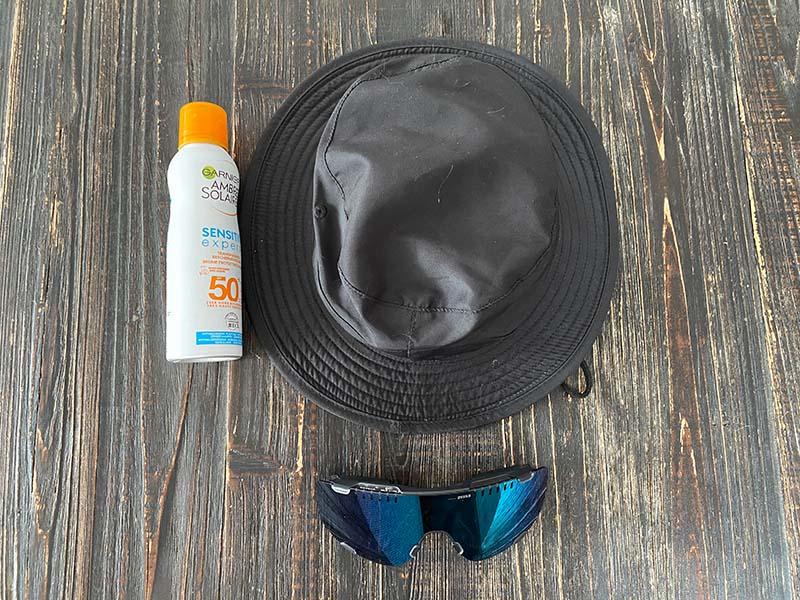
Spending a day in the sun can quickly lead to sunburn and dehydration. Make sure to bring sunscreen with at least SPF 30 and apply it liberally throughout the day. Even in winter in the mountains, on a bluebird sunny day, you will need sunscreen!
Sunglasses and a hat with a brim can help protect your eyes and face from the sun’s harmful rays.
In addition, UV protective clothes protects your entire body on very sunny days. Wear long sleeves and pants with SPF 50+ for optimal protection.
Products we use and can recommend hiking:
3. Insulation

Even on a warm day, temperatures can drop quickly in the mountains or in the evening. A lightweight fleece or puffy jacket can help keep you warm and comfortable.
Synthetic or wool materials are preferred as they still retain heat when wet. Pack your insulation layer in a waterproof stuff sack or plastic bag to keep it dry.
An extra dry base layer, such as a synthetic t-shirt, is also nice to have in case the one you are wearing gets wet.
To block wind and rain take a shell jacket with you that you can easily pack without taking too much space in your backpack.
The holy trinity of outdoor layering is: base layer (synthetic or wool), mid layer (synthetic or wool) and shell.
According to the weather and activity, you can adjust your temperature during the hike by adding or removing a layer.
Products we use and can recommend for hiking:
Peak Performance Helium Jacket
4. Illumination
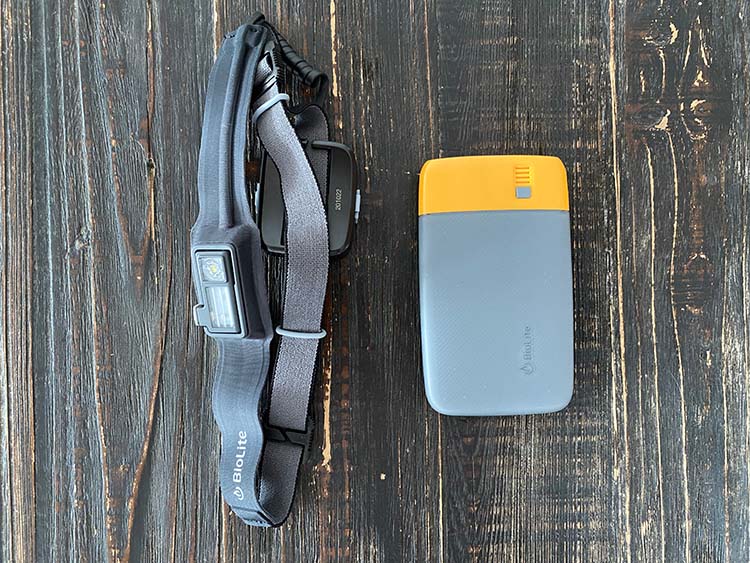
A flashlight or headlamp can help you navigate in the dark and signal for help if needed. Therefore, it’s an important item on our 10 essentials for hiking list. Usually a headlamp will be the most useful. But it’s good to have a back up flashlight as well.
When choosing a headlamp and flashlight, make sure to check the specs of the product. To hike or run a trail at night make sure it has sufficient lumens for the job. A headlamp of around 300 lumens or more should do the job. Also battery life and the ability to connect an external power source while using, such as a powerbank, are important features to consider.
That being said, make sure you have at least one powerbank or extra batteries with you on the trails.
You’ll want to pack your headlamp in an easy accessible pocket in your backpack, for instance the hip pocket.
Products we use and can recommend for hiking:
5. First aid suppliers
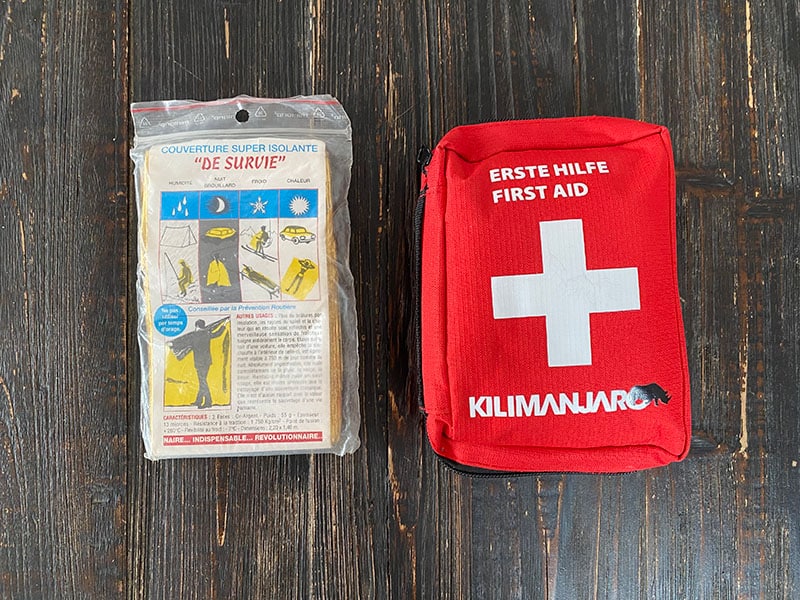
A basic first-aid kit should include items like bandages, gauze, antiseptic, and any prescription medication you may need.
This can help you treat minor injuries on the trail until you can get more advanced medical attention. Make sure to know how to use the items in your first-aid kit before you hit the trail.
An emergency blanket can be a life saver when you get stuck overnight for some reason and helps prevent hypothermia.
But it can also be useful in very hot environment to prevent hyperthermia. An emergency blanket has 2 sides (gold vs. silver). Depending on what side is on the inside, the blanket will either contain body heat or help reducing it.
Products we use and can recommend for hiking:
6. Fire
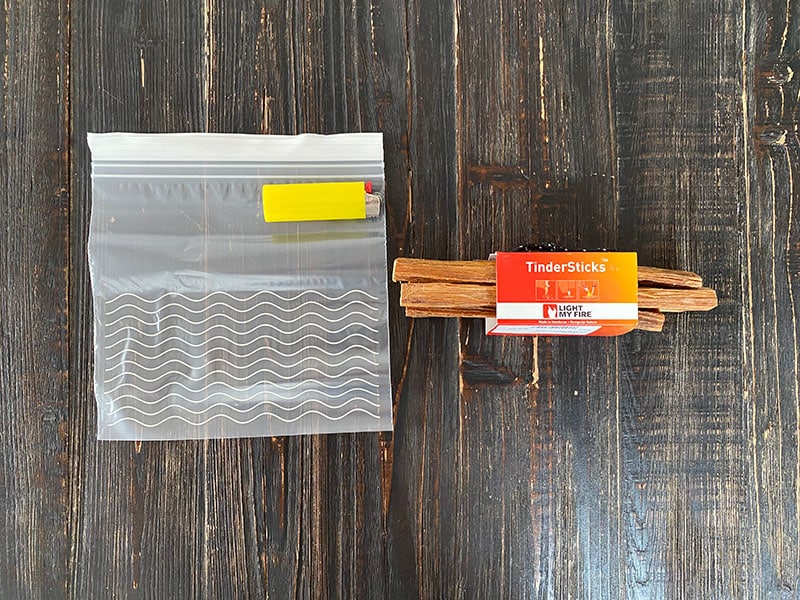
Unless you have Bear Grylls skills or want to do it the old fashion way you can use firesteel to start a fire. But let’s be honest… some matches or a lighter will do the job as well and make your life a lot easier.
Matches or a lighter, kept in a waterproof container, can help you start a fire for warmth or to signal for help. Dryer lint, tinder sticks or cotton balls coated in petroleum jelly can be used as tinder.
It’s important to check fire restrictions in the area you’re hiking as some places may have a ban on fires. For instance, be careful when lighting a fire when the chances for forest fires are high.
Products we use and can recommend for hiking:
7. Repair kit and tools
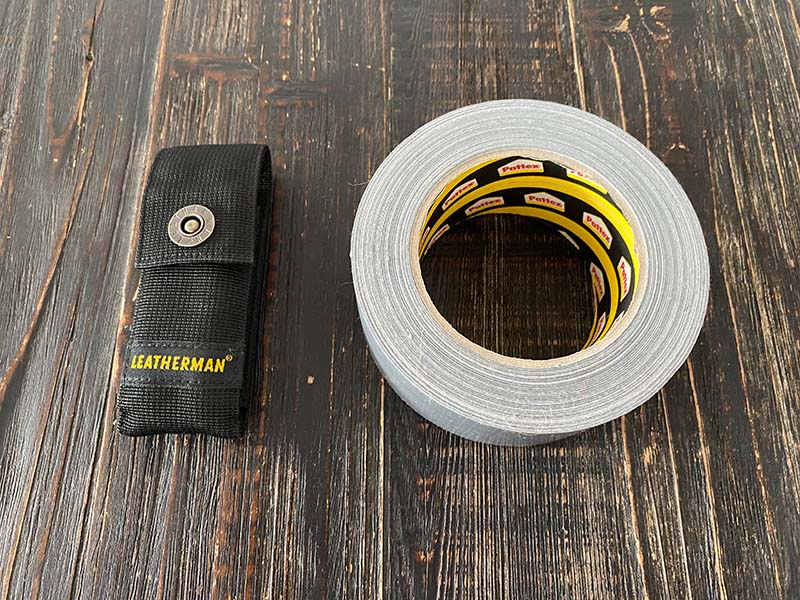
A multi-tool or pocketknife, duct tape, and a repair kit for your gear can help you fix unexpected issues on the trail.
Multi-tools are available in all kinds of models and sizes. We always pack a Leatherman which has a knife, pliers, file, screwdriver,… that will get most of the jobs done.
Duct tape can be used to patch a tear in your tent or fix a broken hiking pole.
TIP: You don’t need to take the thing with you. Just wrap some duct tape around a strap of your backpack or hiking poles and pull it off in case you need it.
Finally, a paracord or a piece of paracord is always useful when you need to tie stuff together.
Products we use and can recommend for hiking:
8. Nutrition
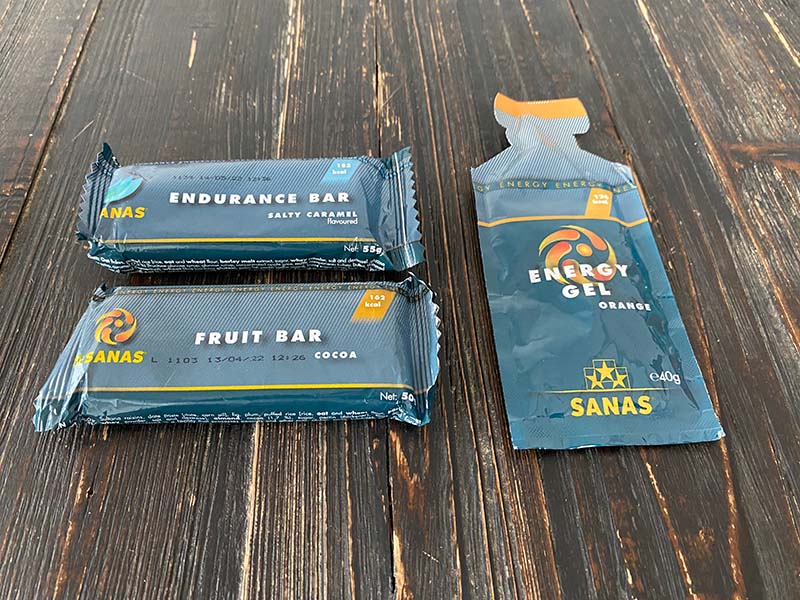
Bring enough food and snacks for the length of your hike, plus a little extra in case of emergency. High-energy snacks like trail mix and energy bars are a great option, as they provide quick energy and don’t take up much space in your backpack. Pack your food in airtight containers to keep it fresh and prevent attracting wildlife.
If you are craving for a decent meal on the trail that doesn’t take much space in your backpack, backpackers food is a good option. Be aware that you will need to be able to add hot water to prepare it. An insulated water bottle that you filled at home with hot water can do the trick.
Products we use and can recommend for hiking:
9. Hydration
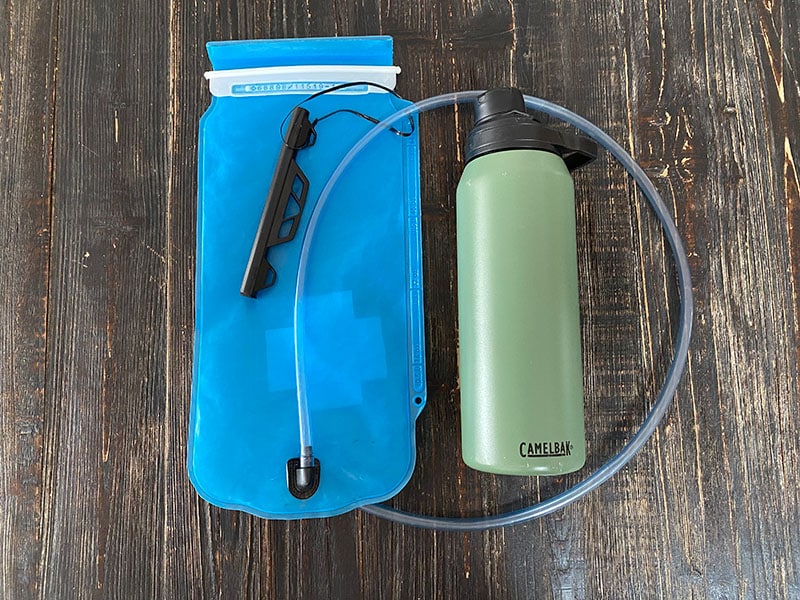
Bring enough water for the length of your hike, plus extra in case of emergency. A hydration bladder or water bottles can be used to carry water. It’s important to stay hydrated throughout the day to prevent dehydration, which can lead to fatigue and headaches.
A hydratation reservoir quite handy because you can drink on the go without having to stop and put your backpack off.
In addition, having an insulated bottle is nice to keep your liquids cold or hot during a long period of time.
As an extra, a quick stow flask is useful to take along. When it’s empty you just fold it and it doesn’t take much space.
Products we use and can recommend for hiking:
Camelbak Chute Mag insulated steel bottle
10. Emergency shelter
As mentioned above (5), if you get lost or injured on the trail, an emergency blanket can provide protection from the elements.
In addition, there are lightweight emergency shelters that are made of the same fabrics that can help keep you safe. You can use them as a sleeping bag or as a shelter/tent.
It’s important to pack your emergency shelter in an easily accessible location in your backpack in case of an emergency.
A bivy sack or emergency shelter tent is also a great option for overnight stays or in areas with inclement weather.
Products we use and can recommend for hiking:
Other essential gear for day hiking
In addition to the 10 essentials for hiking, there is still important gear that you should also bring such as appropriate footwear and clothing for the trail:
- Hiking poles
- Backpack
- Hiking shoes
- Hiking clothes
By packing the 10 essentials for day hiking, you’ll be prepared for whatever the trail may throw your way. Remember to always leave no trace and respect the natural environment. Happy hiking!